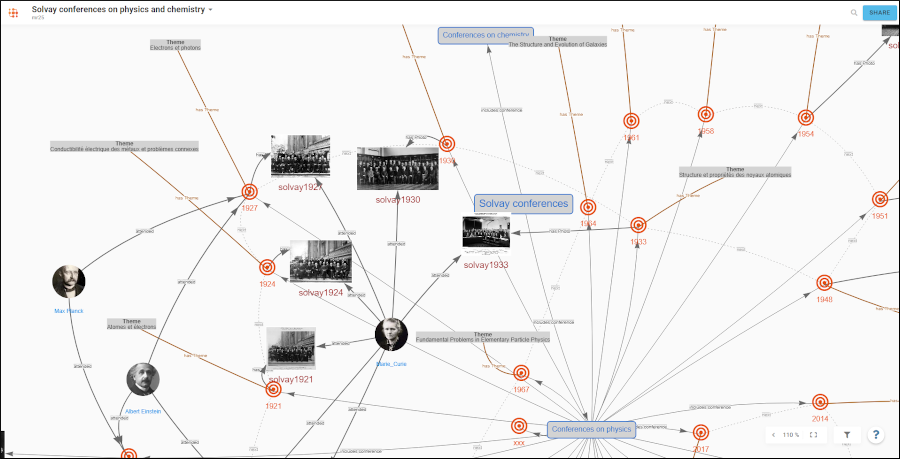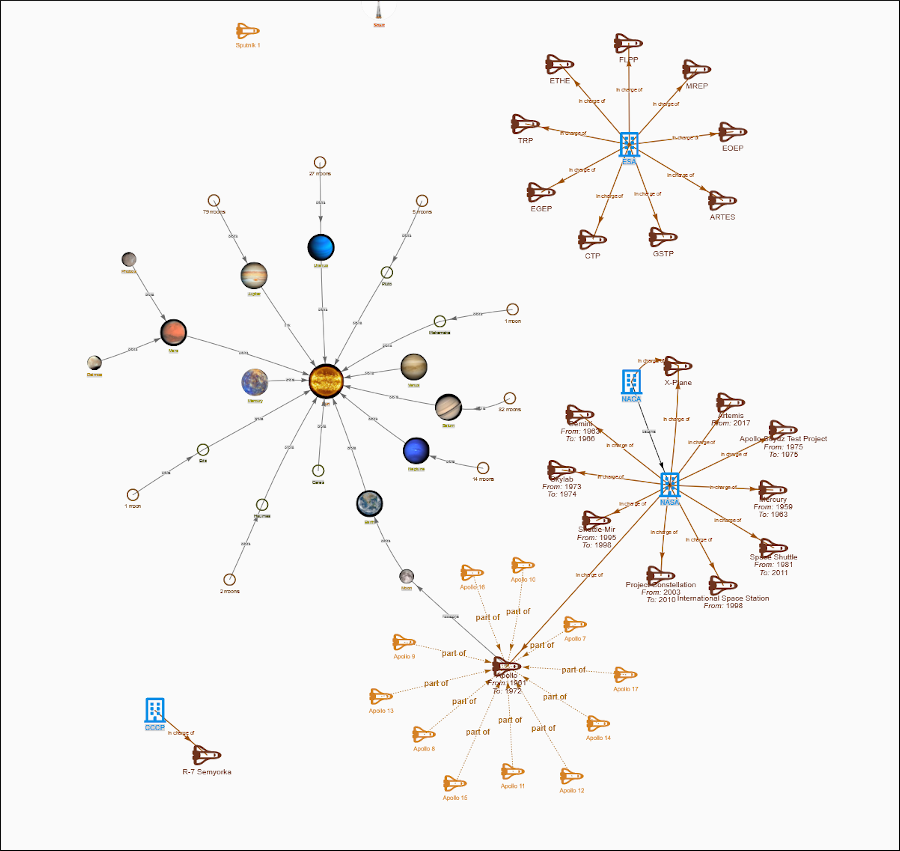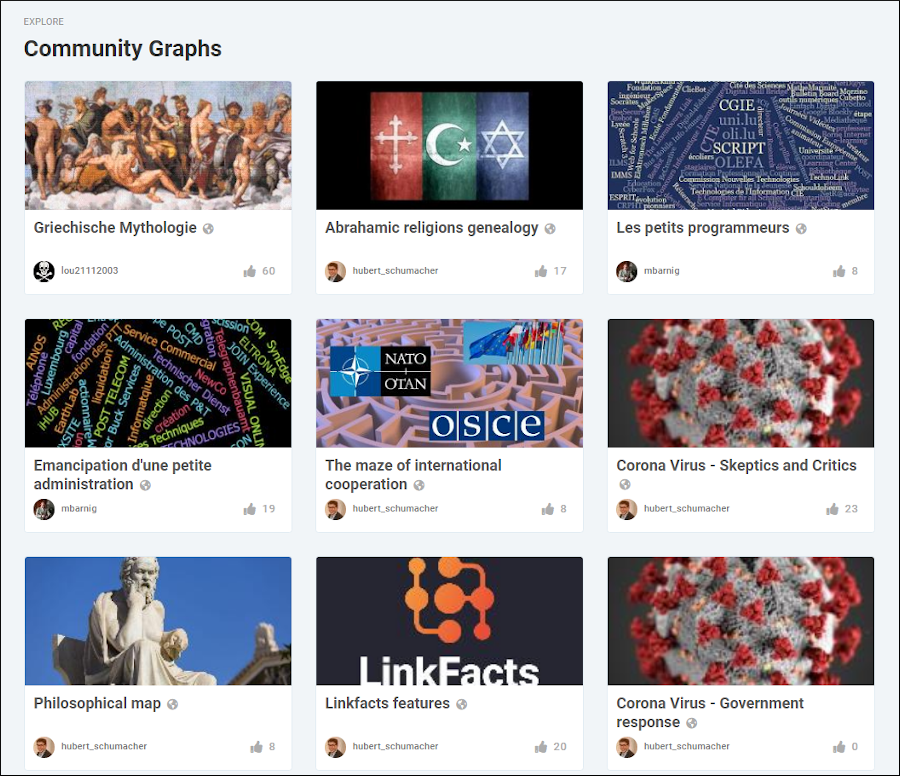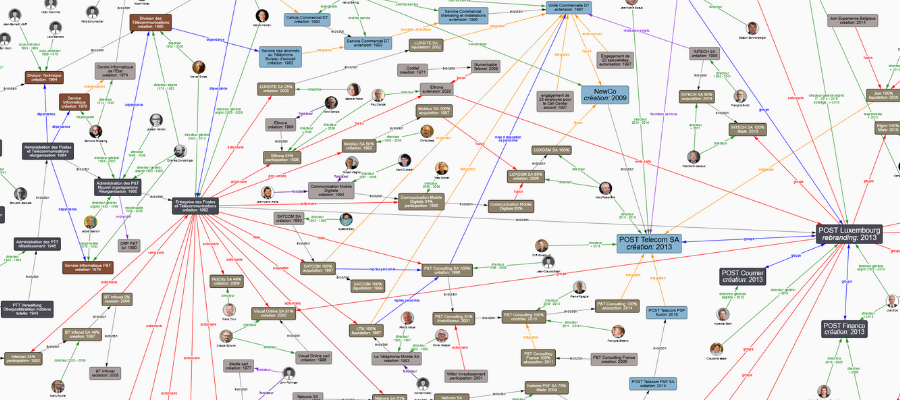In our complex and highly nuanced world, it’s sometimes very hard to get a clear picture of knowledge and ideas. Mind maps and concept maps help, but they usually aren’t well-suited to helping people to navigate, manipulate and visually represent large collections of information.
One European developer decided to do something about that.
Hubert Schumacher, founder & CEO of LinkFacts, created a rich, semantic mapping tool, a platform that enables the creating, sharing and collaborating with others around large visual collections of information and knowledge. Graphs can contain collections of ideas, documents and links to web resources. Graphs can also display complex relationships between related nodes, providing a more nuanced view of these collections.
LinkFacts looked so intriguing that I recently interviewed Schumacher to learn more about the thinking behind it.
Chuck Frey: What inspired you to create LinkFacts?
Hubert Schumacher: A lot of things changed in my life over time, but there have been two constants: a passion for IT and a deeply humanist conviction. After programmable calculators from HP, my first computer was a Commodore VC20 and since I have been working in IT for decades now. In the last decade, three important, but also ambitious questions have occupied my mind:
- What is information and how can you turn it into knowledge an optimistically into wisdom?
- How can we capture, manage, and most importantly share knowledge?
- How can we access practical if not universal truths and how can we stand up against falsehoods and lies?
Frey: What needs weren’t being met by existing visual thinking tools that convinced you that you needed to create LinkFacts?
Schumacher: There are very cool and mature tools around. Nearly all tools that I could find fall into one of the following categories: mind-mapping, concept mapping, visual thinking, collaborative/productivity tools, and analytics/big-data.
They all cover certain core needs, but none had a more holistic and idealistic approach and none of them made the interaction between users the core focus of the solution.

Frey: How is LinkFacts different than traditional mind mapping tools?
Schumacher: The needs that were either not covered not at all, or in either a very poor or very inaccessible way:
- The sharing of the knowledge within a group of interest and outside of it
- The possibility to attach resources like files or websites
- The possibility to structure (with views, layers and filters) huge graphs and to navigate them easily
Frey: Your blog talks about the idea that LinkFacts is based on “semantic graph technology.” What does that mean?
Schumacher: That we give life to the key principle of the semantic web idea: Anybody can say anything about anything. In the long run, LinkFacts may be closer to Twitter or a graph-based Wikipedia than to the mind mapping mindset.
There are many aspects to this. The most important is that biology has given us a brain that can represent concepts in the form of linked graphs, but combined with eyes, ears and mouth, which to use an IT term are “serial ports” to communicate with the outside world.” A graph is transposed into speech and text, and in the receivers’ brain, are converted back into graph representation again. LinkFacts may be a tool to better connect those two worlds (to enable the sharing of knowledge and ideas).

Frey: What are the main use cases for LinkFacts? What can people DO with it?
Schumacher: One of our customers uses LinkFacts to structure the book he in about to write. He confessed that LinkFacts has already improved his book a lot. Another use case are all those intellectually honest bloggers and YouTubers who try to share a large number of sources in the comments section of their videos. It’s just a pain to their users. The same goes for every article in a newspaper or magazine, especially when it is scientific. Just one link to a public LinkFacts graph would be enough and very ergonomic for people to browse.
Org charts, genealogy and project documentation are also well-suited to visual graphs. Consultants can use LinkFacts to share documents with their clients. How do lawyers currently share their case documents with their clients? Mostly not at all or by mail. One privately shared LinkFacts graph would give the client an overview of every law text that’s relevant to their case and every letter that has been sent or received.
Finally, LinkFacts gives you a way to work through contradictions and nuances in the information and ideas you’ve collected. You can enrich them by adding comments and source information to them.
Frey: Who is your ideal user for LinkFacts? What types of people can benefit the most from it?
Schumacher: Researchers, journalists, investigators, students, project managers. The set of groups that consider themselves as knowledge workers or intellectuals.It’s for anyone who collects and enriches knowledge.
Frey: How do community graphs work?
Schumacher: A community graph is just a graph that you share with others. It has a public internet address that you can share with whomever you want.
LinkFacts isn’t just a tool for collecting and connecting knowledge and ideas. It’s also a platform for people to share, collaborate and comment on each others’ ideas. If you think about it, the whole world is a vast graph where everything can be connected to everything else.

Frey: What are some of the most interesting use cases of community graphs?
Schumacher: LinkFacts has the notion of improving other people’s graphs, similar to Wikipedia or GitHub. The owner of the graph can accept a suggestion or discard it. Community graphs are where the general user attraction and interaction happens. If you want to limit the sharing more confidentially to one person or a team of people, you can do that, too.
Frey: I see that you make it possible for users to create customized templates for their use. What are some of the most interesting templates you’ve seen?
Schumacher: The notion of a template is understandable for everyone, but technically it’s more accurate to call it inheritance. One graph can inherit resources from another. This makes it possible to create node types or link types that you can reuse for many graphs.
Frey: The world seems to be filled with disinformation today. How can LinkFacts help its users to sort out the nuances and opinions, separate the wheat from the chaff if you will, and extract universal truths from it?
Schumacher: The idea is that a lie always lives in isolation. As soon as you add the contextual information, the lie blows up. Of course, as in the film ‘The Truman Show’, you can fool people if you build an illusion of the surrounding context as well, but then the illusion becomes extremely expensive and difficult to maintain. And the advantages of the lie being cheap, compared to the truth disappears. LinkFacts is not meant to arbitrate, but to let mutually exclusive viewpoints co-exist and give the user the possibility to point out that ‘Fact A’ and ‘Fact B’ cannot be true at the same time.
Frey: You mentioned at the beginning of this interview that you have a deeply humanist conviction. How does LinkFacts help its users to achieve self-actualization?
Schumacher: Understanding is in my opinion the prerequisite for all self-actualization effort, and to understand yourself and the world that is surrounding you, you need to accumulate knowledge by reflection and by communication with your peers. LinkFacts as a tool and as a platform may help you to make rapid progress in both of these dimensions.
Frey: What’s next for LinkFacts?
Schumacher: Our first priority is to complete the new UI/UX experience improvement. Our plans also include integrations with other prominent tools like Active Directory and an administration interface for organizations to manage users, teams, permissions and diskspace. There is still a lot to come.
You can learn more about LinkFacts and sign up for a free account here. I also recommend Hubert Schumacher’s video, in which he explains why he created LinkFacts.


Leave a Reply